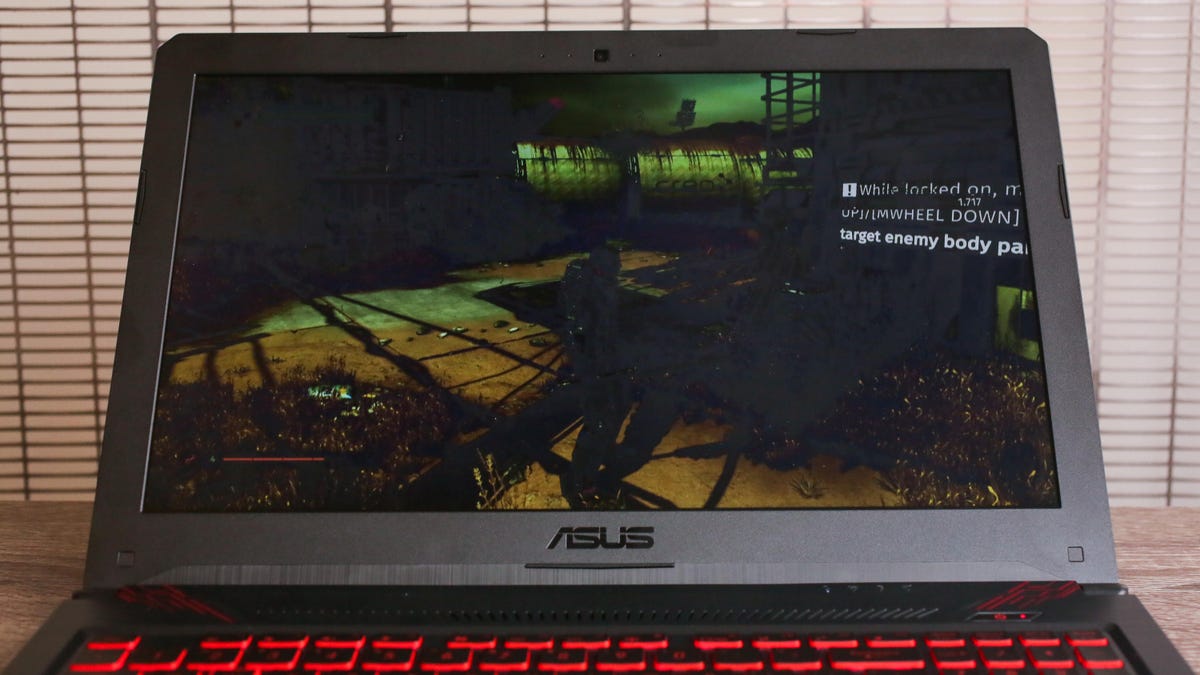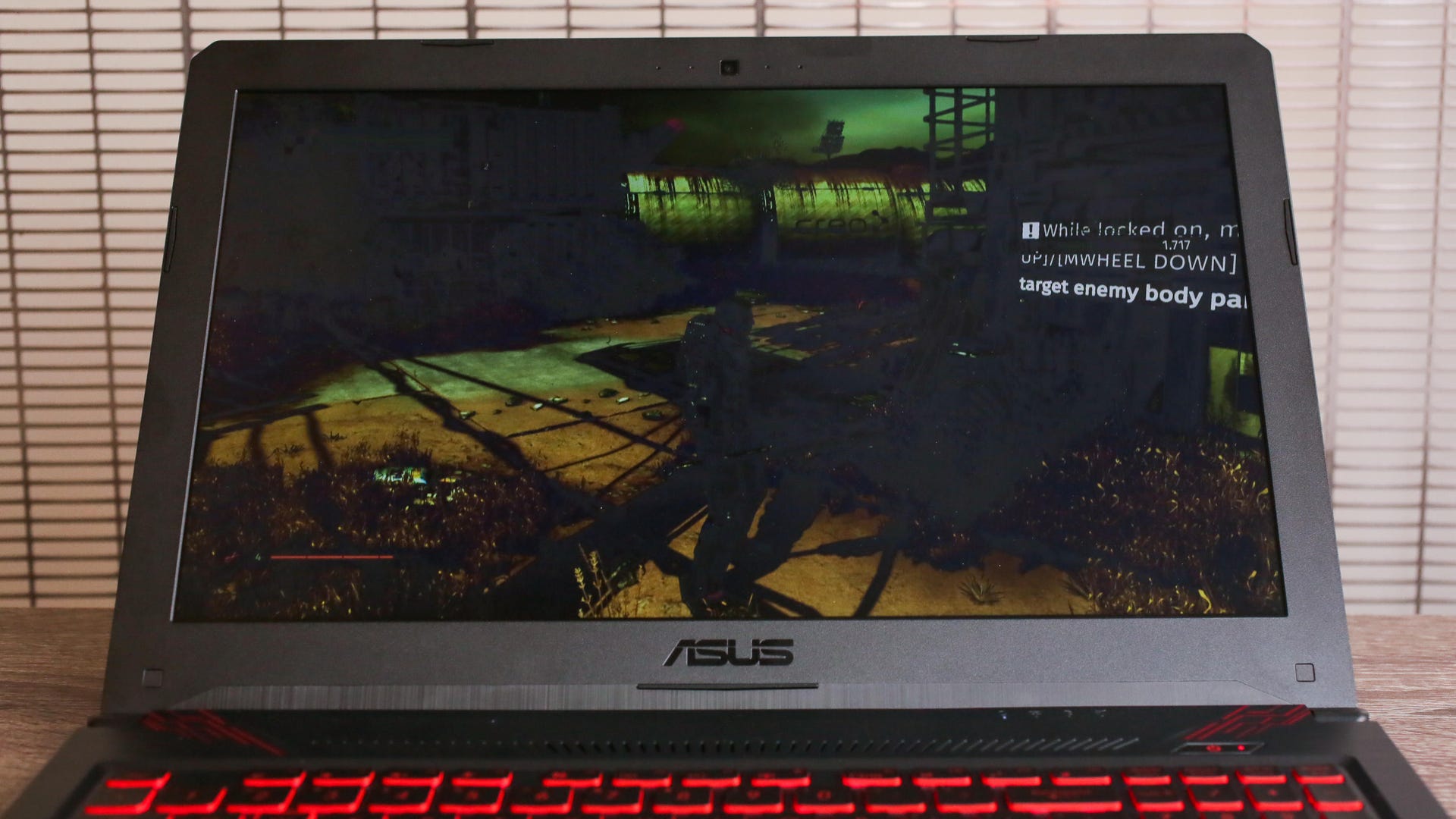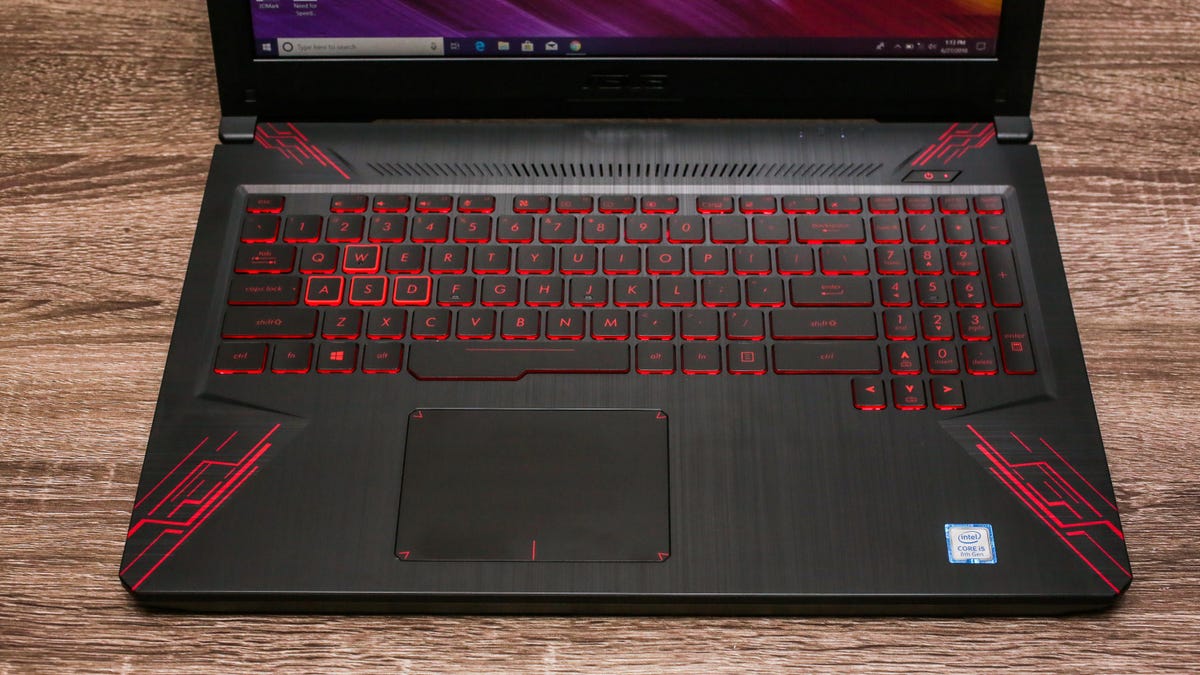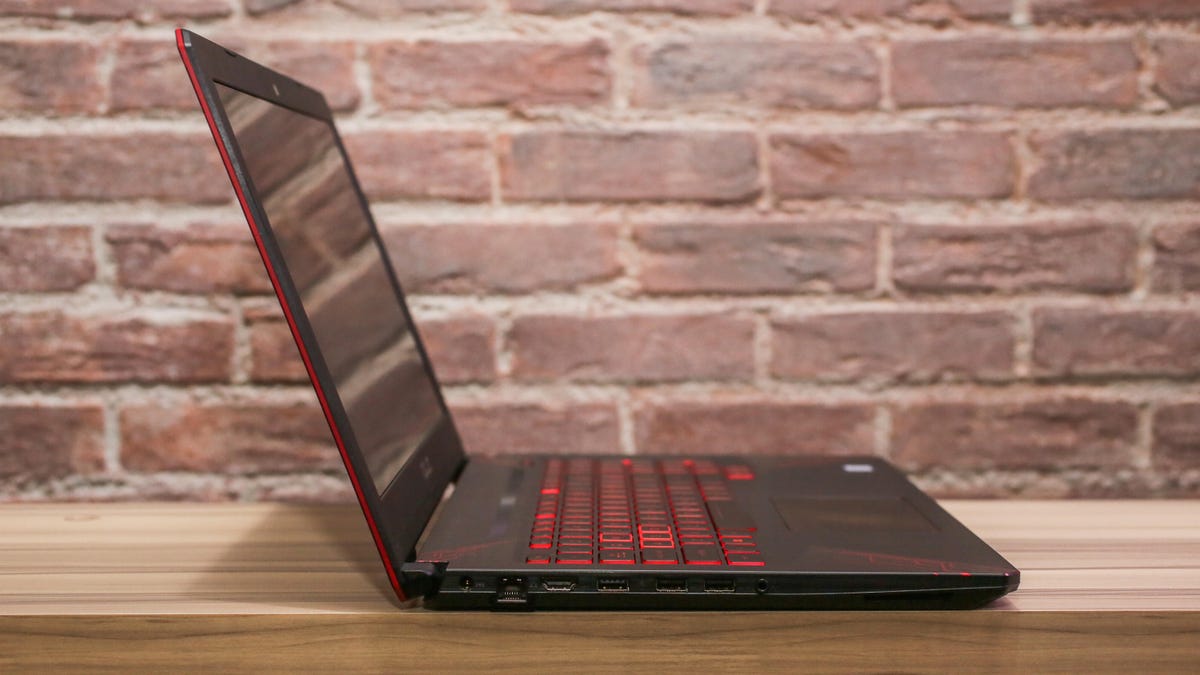Asus TUF Gaming FX504 review: Nothing but compromise – CNET
Entry-level gaming laptops typically have meh keyboards, which is a problem because PC gamers are undoubtedly hard on their keyboards. Asus’ TUF FX504 puts a better keyboard in a low-end laptop. One that’s cushy for long gaming sessions and Asus says is extra durable, lasting for up to 20 million key presses.
Mục Lục
The Good
The Asus TUF Gaming FX504GD-ES51 is an entry-level gaming laptop with a comfortable and extra durable keyboard, easy access to RAM and storage drives for upgrades and generally good gaming performance for its configuration.
The Bad
Against its similarly priced competition, the base TUF’s display is disappointing. It has fewer ports and its hybrid hard drive is a bit slower than laptops with solid state drives.
The Bottom Line
If you’re in the market for an entry-level gaming laptop with an extra durable keyboard, consider the Asus TUF Gaming FX504GD-ES51. Everyone else should keep shopping.
Asus also designed its cooling fans to be better at removing dust particles and dirt, which in turn should extend the overall life of the laptop. It also keeps it nice and cool while gaming, which is great since the TUF is relatively thin for a gaming laptop.
What Asus didn’t do is use a decent full HD 15.6-inch display in the base model reviewed here, the FX504GD-ES51, which sells for $699 in the US and £650 in the UK. (Australian buyers can get a AU$1,900 version with a better display, an Nvidia GeForce GTX 1050Ti GPU, 16GB of memory, dual storage drives and a six-core Intel Core i7-8750H.)
Although the $699 price is on par for the specs with competing models from Acer and Dell, they have better displays than the entry-level TUF. So what’s more important for an entry-level gaming laptop: A durable keyboard or good display? For my money, it’s the latter.
Asus TUF Gaming FX504GD-ES51
Asus TUF Gaming FX504GD-ES51Price as reviewed $699 Display size/resolution 15.6-inch 1,920 x 1,080 displayCPU 2.3GHz Intel Core i5-8300HMemory 8GB DDR4 SDRAM 2,660MHzGraphics 2GB Nvidia GeForce GTX 1050Storage 1TB hybrid SSHD FireCudaNetworking 802.11ac wireless, Bluetooth 5.0Operating system Window 10 Home (64-bit)
Sit there, don’t move

Enlarge Image

Off-angle viewing is poor with the base model TUF’s display.
The main issue with the display is that, instead of using an IPS-type panel like Dell, Acer, HP and others, it’s a TN panel with poor off-angle viewing. Unless you and the display are in the perfect position, the display starts to wash out or the colors appear inverted. Color looks muted in general and contrast isn’t particularly good either.
Now, Asus does use IPS panels on the higher-end TUF models, so if you like the design and don’t mind spending $1,000 to get a better display then you can ignore the last paragraph. Or, if you intend to use this connected to an external display mostly, there’s no problem there, either. There’s even a full-size HDMI output on the left side ready to go.
In fact, all the connections are on the left side: power, Ethernet, one USB-A 2.0, two USB-A 3.0, a combo headphone/mic jack and the aforementioned HDMI. This makes hooking up peripherals easy and puts all the cables on one side away from your mouse (assuming you mouse with your right hand). There’s nothing on right except for a lock slot. This begs the question, with all that space, why not add an optical drive, an SD card reader or a USB-C port?

The keyboard is a treat, though. As I said at the top, entry-level laptops usually have pretty lackluster keyboards. Asus’ is a few notches above. Like its competitors, Asus outlines the WASD keys in red, so finding your home position is easy. The red markings on black keys can be tough to read, but the keys are backlit and there’s three levels of brightness (others are usually only on and off).
Along with the number pad on the right, the arrow keys are dropped a row to make them easier to find. Asus also spaced the function keys into sets and extended the bottom of the space bar making it less likely you’ll miss hitting it in the heat of battle. It’s worth noting, too, that Asus lets you control fan speed with a function key letting you cool things down or go silent with a button press.
The touchpad is decent also, though it doesn’t have discrete left and right mouse buttons, and the built-in speakers are respectable for a budget laptop. You’ll probably want to use a headset anyway, but it’s nice that the speakers don’t sound thin and tinny.

You get out what you put in
The TUF comes in four different configurations at the moment ranging from $699 to $999. The entry-level configuration is about what you can expect from competitors and, generally speaking, the 2GB GTX 1050 graphics card in this base model is good enough for old and new games with medium detail settings at the display’s full HD resolution.
The top-end configuration has a 1050Ti, and while there aren’t vast differences in the performance of the 1050 and 1050Ti, the latter will give you a bit more headroom for future games. (But frankly, if you can spend $1,000, consider getting a laptop with a 1060 Max Q GPU.)
Set to its full 1,920×1,080-pixel resolution and settings on high, older games like BioShock Infinite and Deus Ex: Mankind Divided ran smoothly, though the latter was predictably more enjoyable dialed back to medium. Really anything graphically demanding, you’ll want to play on medium. Sessions of PUBG and Fortnite were definitely playable, too, so if you’re just looking for a cheapish PC to do battle on breaks in your work or school day, this Asus config will do the trick.
The hybrid hard drive, which is a 1TB 5,400rpm hard drive matched with 8GB of cache memory, is faster than a 5,400rpm drive on its own. An SSD for your boot drive will help with overall system performance and launching games as well as cooling and battery life. You can add an M.2 SSD on your own through the bottom, as well as increase RAM up to 32GB.
Long battery life isn’t something you’re going to find in a budget laptop. The TUF doesn’t last as long as competing systems, but wasn’t bad either hitting 5 hours on our streaming video playback test.
Good, but there are better options
With a disappointing display, no USB-C ports or an SD card reader and a slower-than-SSD hybrid hard drive, the Asus TUF Gaming FX504 comes up short in the bargain gaming laptop category. Both the Acer Nitro 5 and Dell G3 15 are better options for their displays alone.
It’s not all bad news, though. The FX504GD I tested has good gaming performance, the keyboard is comfortable and durable and you can easily add more memory and storage. If you like the TUF design, I’d recommend saving up for the $899 configuration that gets you a better display, a 1050Ti, dual storage drives including a 128GB M.2 NVMe SSD and a six-core Intel Core i7-8750H.
Video playback battery drain test (streaming minutes)
Dell XPS 15 9575 2-in-1
406
HP Spectre x360 Convertible
374
Acer Nitro 5
333
Asus TUF Gaming FX504GD
300
Digital Storm Equinox
247
Note: Longer bars indicate better performance.
Geekbench 4 (Multi-Core)
Digital Storm Equinox
19725
HP Spectre x360 Convertible
15425
Dell XPS 15 9575 2-in-1
14810
Acer Nitro 5
14220
Asus TUF Gaming FX504GD
11548
Note: Longer bars indicate better performance.
Cinebench R15 CPU (multi core)
Digital Storm Equinox
1021
Acer Nitro 5
851
HP Spectre x360 Convertible
783
Dell XPS 15 9575 2-in-1
691
Asus TUF Gaming FX504GD
599
Note: Longer bars indicate better performance.
3DMark Fire Strike Ultra
Digital Storm Equinox
3413
Acer Nitro 5
1873
Dell XPS 15 9575 2-in-1
1627
HP Spectre x360 Convertible
1614
Asus TUF Gaming FX504GD
758
Note: Longer bars indicate better performance
Bioshock Infinite (fps)
Digital Storm Equinox
171.67
Acer Nitro 5
98.51
Asus TUF Gaming FX504GD
82.92
Dell XPS 15 9575 2-in-1
76.36
HP Spectre x360 Convertible
76.28
Note: Longer bars indicate better performance.
Deus Ex: Mankind Divided (fps)
Digital Storm Equinox
72.4
Acer Nitro 5
37.7
Asus TUF Gaming FX504GD
31.2
Dell XPS 15 9575 2-in-1
28.3
HP Spectre x360 Convertible
28.2
Note: Longer bars indicate better performance.
System configurations
Acer Nitro 5 Microsoft Windows 10 Home (64-bit); 2.3GHz Intel Core i5-8300H; 8GB DDR4 SDRAM 2,660MHz; 4GB Nvidia GeForce GTX 1050Ti Graphics; 256GB SSDAsus TUF Gaming FX504GD Microsoft Windows 10 Home (64-bit); 2.3GHz Intel Core i5-8300H; 8GB DDR4 SDRAM 2,660MHz; 2GB Nvidia GeForce GTX 1050 Graphics; 1TB SSHDDell XPS 15 9575 2-in-1 Microsoft Windows 10 Home (64-bit); 3.1GHz Intel Core i7-8705G; 16GB DDR4 SDRAM 2,400MHz; 4GB AMD Radeon RX Vega M GL Graphics; 512GB SSDHP Spectre x360 Convertible Microsoft Windows 10 Home (64-bit); 3.1GHz Intel Core i7-8705G; 16GB DDR4 SDRAM 2,400MHz; 4GB AMD Radeon RX Vega M GL Graphics; 512GB SSDDigital Storm Equinox Microsoft Windows 10 Home (64-bit); 2.2GHz Intel Core i7-8750H; 16GB DDR4 SDRAM 2,660MHz; Nvidia GeForce GTX 1070 with Max-Q Design; 500GB SSD






